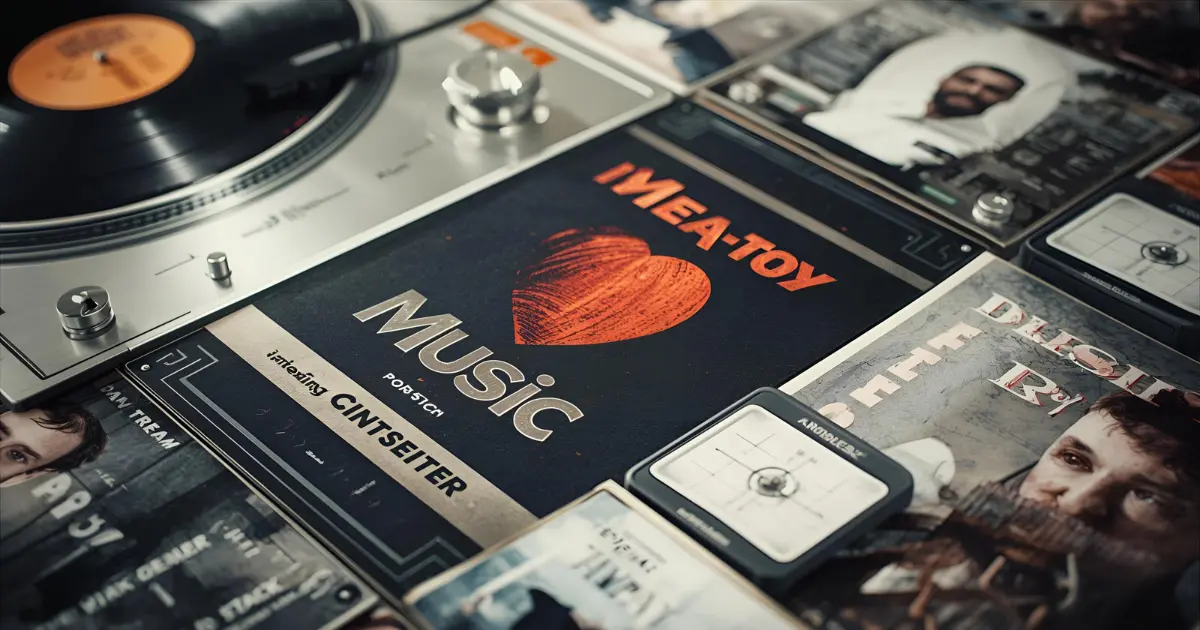TL;DR (use this if you’re in a hurry)
You can’t upload directly to most DSPs (Spotify/Apple) as an indie — you’ll need a music distribution company (aka “aggregator”). (Spotify, Apple Music for Artists)
Get your codes right: ISRC (track-level) and UPC (release-level). If you don’t have them, your distributor can usually provide them — but understand what they mean and how to keep them consistent. (IFPI: ISRC, Soundcharts guide)
Register for royalties beyond your distributor payout:
• Songwriting side (composition): APRA AMCOS (AU) or your local PRO; in the US, digital mechanicals flow via The MLC. (APRA AMCOS, The MLC, U.S. Copyright Office)
• Recording side (sound recording performance): SoundExchange in the US; PPCA in AU for certain public uses. (SoundExchange, PPCA)
Choose a distributor by business model (subscription vs pay-per-release), rights clauses, speed/support, payout tools, and extra services (publishing admin, advances, splits). Validate pricing on the official pages (they change). (DistroKid, TuneCore, CD Baby, UnitedMasters)
The market is big and growing; streaming is the engine — plan for recurring releases, smart metadata, and post-release growth loops to compound listener signals. (Music Business Worldwide)
1) What “music distribution” is (and isn’t)
Music distribution is the process that gets your recordings onto digital service providers (DSPs) like Spotify and Apple Music, collects store/streaming revenue for those recordings, and pays you (minus fees). As an independent artist, you don’t usually deliver directly to DSPs — you work with a distribution company that’s already integrated with those platforms.
Why it matters in 2026
Streaming remains the dominant channel for recorded music revenues globally, so distribution is table stakes for discovery, chart eligibility, and getting paid. Your choice of distributor impacts time-to-store, metadata accuracy, playlist pitching access, splits, and reporting granularity.
2) The market context (so you can make business-grade decisions)
Global recorded-music revenue hit ~$29.6B in 2024 (up 4.8% YoY), with streaming as the primary driver — a reminder that distribution choices are business decisions, not mere admin.
Apple and Spotify both steer creators to approved distributors and provide official setup/analytics tools (Spotify for Artists, Apple Music for Artists) — your distributor should integrate smoothly with these.
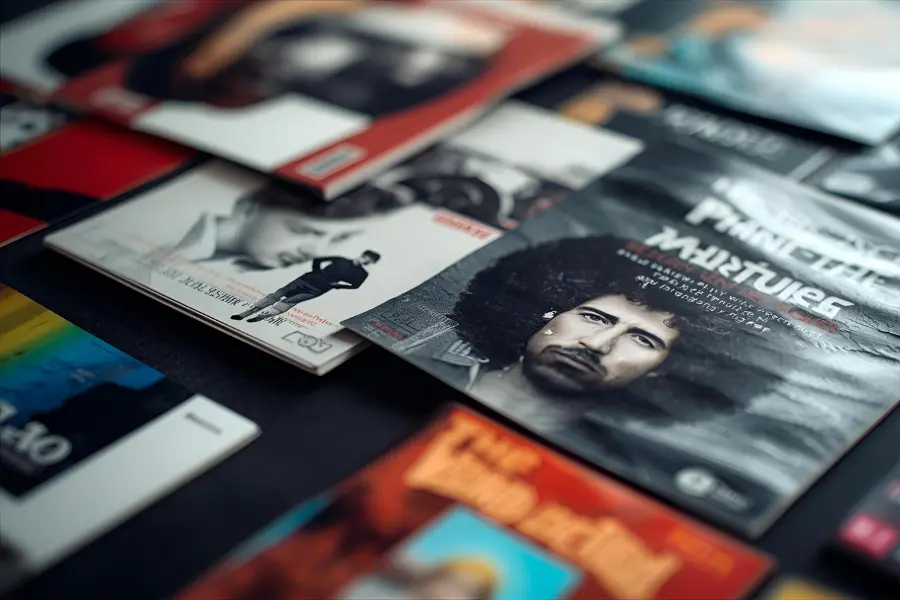
3) Before you upload: set up your identifiers and rights
ISRC vs UPC — get this right once
ISRC = International Standard Recording Code — a unique ID at the track (or music video) level used to identify recordings. You can obtain a registrant prefix and assign your own codes, or your distributor can help. Keep a central log.
UPC (GTIN-12) = a release-level product code for your single/EP/album; essential for sales tracking and chart reporting. Don’t recycle UPCs between releases. (Soundcharts guide)
Pro tip: Maintain a simple spreadsheet that maps Release Title → UPC and Track Title/Version → ISRC. If you remaster or upload new versions, assign new ISRCs where appropriate and a new UPC for materially new releases/editions (e.g., deluxe). (Confirm details with your distributor’s policy.)
Identifiers & Barcodes (Beyond ISRC/UPC)
- ISWC (composition ID): the unique ID for the song, issued via your PRO/publisher. Store it alongside each track’s ISRC. (APRA AMCOS works/ISWC overview)
- IPI/CAE (writer IDs): the unique IDs for each songwriter/composer. Add all co-writers’ IPI/CAE numbers to your registry.
- ISNI (creator/organization IDs): persistent identifiers for artists/labels. Helps de-dupe credits across ecosystems. (ISNI)
- UPC/EAN via GS1: a UPC/EAN (GTIN) is required at the release level; aggregators can provide one, or you can obtain GTINs via GS1. (GS1)
Music videos need their own ISRC
A music video is a separate recording and needs its own ISRC. New cuts/edits get new ISRCs. Don’t reuse the audio ISRC on the video.
Rights/royalties plumbing you must set up (beyond your distributor)
You’ll typically get recording royalties from your distributor (store/stream payouts). But there are other streams:
Songwriting (composition) royalties:
• AU/NZ: join APRA AMCOS; learn their streaming and distribution rules and payment schedules.
• Global concept: your local PROs handle public performance; The MLC (US) handles digital mechanical royalties for eligible uses on interactive DSPs. If you write or co-write songs streamed in the US, make sure you’re connected to The MLC (directly or via your publisher/admin). (The MLC, U.S. Copyright Office)
Recording (sound recording) performance royalties for non-interactive digital services: e.g., US Pandora radio tiers, satellite radio — in the US, register with SoundExchange; in Australia, PPCA covers certain communication/public performance uses of sound recordings.
Quick mental model:
Distributor → store/stream payouts for the recording.
PRO/MLC → money for the songwriting layer.
SoundExchange/PPCA → neighboring rights/recording performance in specific contexts. (Different flows, different registrations.)
Register to collect all the money (beyond your distributor)
Songwriting (composition). Join your local PRO (e.g., APRA AMCOS in AU/NZ) and connect to The MLC to collect US digital audio mechanicals from interactive streams/downloads. The MLC covers digital mechanicals only; you still need a PRO for public-performance royalties. APRA AMCOS themlc.com
Recording (neighbouring rights).
• US non-interactive digital (Pandora radio tiers, SiriusXM, webcasters): register with SoundExchange. By law, SoundExchange splits royalties 50% to the sound-recording rights owner, 45% to featured artists, 5% to non-featured artist funds.
• International airplay/broadcast: if you’re getting spins abroad, also register where the usage happens (examples: PPL in the UK; GVL in Germany; Re:Sound in Canada). PPL GVL resound.ca
4) Choosing a music distribution company: key criteria
A. Business model & pricing (verify on the official pages)
• Subscription / unlimited releases: predictable annual fee (great for prolific output). Examples: DistroKid (tiers), TuneCore (has unlimited plans).
• Pay-per-release: one-time fee per single/album (useful for low release volume). Example: CD Baby (per-release pricing).
• Hybrid / membership with commission options: e.g., UnitedMasters Free vs SELECT ($59.99/yr keeps 100% of royalties).
Tip: Pricing can (and does) change. Always double-check the current official page before you decide — not a blog roundup.
If you’re still weighing whether to prioritize upfront costs, long-term savings, or free tiers, check our rundown of the best platforms to distribute music for free.
B. Rights & contract clarity
Look for non-exclusive delivery so you can move later if needed.
Check content takedown rules (fees?), reversion of any advances, and whether they insert marketing/commission clauses (e.g., brand/sync opt-ins). If you’re considering UnitedMasters deals, read their plan/FAQ pages and independent analyses. (UnitedMasters, independent analysis example: Payusnomind)
C. Delivery quality & speed
Preferred/approved partner status can help with Apple Music features (Dolby Atmos delivery, credits, lyrics) and generally implies reliable encoding/metadata handling.
D. Royalty splits & finance tools
Built-in splits (auto-payout to collaborators) save headaches. Many majors (DistroKid, TuneCore tiers) support splits. Validate availability on their product pages.
E. Extras that might matter
Publishing admin (collect global mechanicals for compositions if you’re not using your own admin/publisher).
Playlist pitching: you do Spotify Editorial pitching inside Spotify for Artists; distributor doesn’t pitch that directly, but good metadata/timelines help.
Promo tools: Spotify’s Marquee, Discovery Mode, Showcase live in the Spotify ecosystem; plan your budget accordingly. (New York Post, Spotify Campaigns hub)
For a deeper dive into how identifiers like ISRC, ISWC, and UPC connect to distribution pipelines, see our guide on music metadata and identifiers.
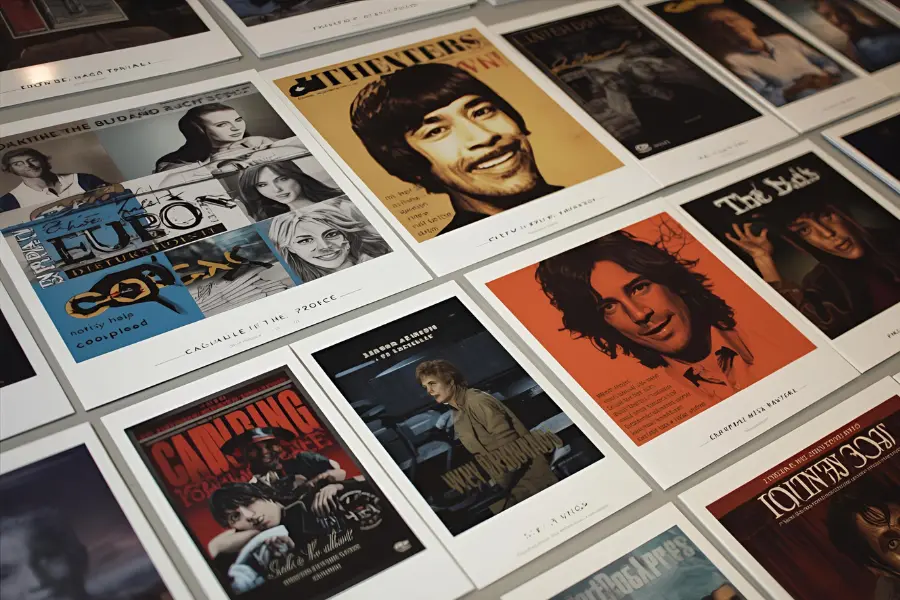
2026 Music Distributor Snapshot (for indie artists)
All prices/features change often — I’ve used the official pages and current help-docs wherever possible and stamped sources below each row so you (or your editor) can re-verify quickly.
| Distributor | Headline pricing (artist count) | Keep % / Commission | Typical time to go live (Apple/Spotify) | “Unlimited” policy (any fair-use caveats?) | Extras / technical (high-signal) | What royalties they pay you | What they don’t pay (you must collect elsewhere) | Pros | Cons | Community pulse |
|---|---|---|---|---|---|---|---|---|---|---|
| DistroKid (Subscription — annual) | From ~US$22.99/yr for 1 artist; higher tiers/label plans for more artists | 100% of recording royalties (some optional add-ons cost extra) | Help-doc says ~1–7 days after approval; Apple 1–7 days | “Unlimited uploads” within the artist slots you pay for; no public “fair-use” cap disclosed; non-exclusive | Fast delivery reputation; optional Beatport add-on; Snapchat Sounds toggle; lots of paid add-ons; no full publishing admin | Store/stream master (recording) royalties (Spotify/Apple etc.) | Publishing (performance/mechanicals via PRO/MLC), non-interactive digital performance (US SoundExchange) not collected by DK; you must register with PRO + The MLC (US) and SoundExchange separately | Very fast, cheap at volume, easy splits; huge creator adoption | Annual fee to keep releases live (unless “Leave a Legacy” per-release add-on); upsells; no publishing admin | Trustpilot ~4.5/5 with 35k+ reviews (generally positive) (DistroKid, Help Center, Trustpilot) |
| TuneCore (Unlimited subscription & pay-per-release options) | AU/Global page lists Unlimited plans from around US$31.99/yr and up; also pay-per-release options in some regions | Up to 100% (depends on plan/feature); publishing admin is separate | Help-doc: Apple ~5 business days after approval; varies by store | “Unlimited” means unlimited releases under the chosen plan; account cannot mix unlimited & pay-per-release; no public fair-use caps | Strong Publishing Administration product; YouTube Content ID; creator education; Dolby Atmos upload guidance | Recording royalties via distribution; publishing royalties via TC Publishing Admin if you add it | Without Publishing Admin: still must collect PRO + MLC; also SoundExchange (non-interactive) not covered by distribution | Flexible (unlimited or per-release), robust publishing add-on; decent splits | UI/plan complexity; once you switch to Unlimited you can’t revert to pay-per-release on the same account | Trustpilot ~4.1/5 (mixed-positive) (TuneCore, Help, Trustpilot) |
| CD Baby (Pay-per-release — one-time) | US$9.99 single / US$9.99 album (standard); add CDB Boost (+$39.99) for extra collections/sync | Takes ~9% of recording revenue on standard distro (no annual hosting fees) | Help-doc: Spotify/Apple ~2 days–2 weeks after partners ingest | No “unlimited” product (per-release pricing by design) | CDB Boost can register for The MLC + SoundExchange (label share) and open sync pitches; physical/CD options | Recording royalties (distro); with Boost: help with MLC registration + label-share SoundExchange + sync program | Without Boost: must register MLC & SoundExchange yourself; even with Boost you still need your PRO for performance royalties | One-time fee keeps music live; physical/CD options; Boost can scoop missed US royalties | 9% commission; slower support at times per reviews; fewer “instant” creator tools | Trustpilot ~3.8–4.0/5 |
| UnitedMasters (Membership) | SELECT US$59.99/yr (keep 100%); free/other tiers have commission; brand/sync focus | Up to 100% on SELECT; other tiers take a cut | Not stated precisely; payouts typically 45–60 days post-month like others; offers real-time estimated royalties | Says “distribute as many releases as you’d like per month” on SELECT; no explicit fair-use cap publicly stated | Brand/sync marketplace; Real-Time Royalties estimates; in-app Wallet; does not deliver to SoundExchange | Recording royalties from DSPs | Publishing (PRO/MLC) and SoundExchange not handled by base distribution; UM no longer delivers to SoundExchange; you must register | Brand/sync paths; clean mobile UX; real-time est. royalties | Smaller store list vs some incumbents (varies), mixed artist reports about support/holds; splits require all collaborators to join | Trustpilot ~3.6/5 (more mixed) (UnitedMasters, Support) |
The royalties they miss (across all distributors) — what you must set up yourself
• Songwriting (composition) royalties from streaming: register with your PRO (e.g., APRA AMCOS) and, for US interactive streaming mechanicals, with The MLC (or via a publishing admin such as TuneCore Publishing / CDB Boost). (APRA AMCOS, The MLC, TuneCore Publishing, CDB Boost)
• Non-interactive digital performance of the sound recording (US web radio, satellite): register with SoundExchange (featured artist + SRCO/label shares). AU public performance/communication of sound recordings is via PPCA (separate from APRA).
Quick picks (who fits what)
• High output, want speed & cheap: DistroKid (just add PRO/MLC/SoundExchange yourself).
• Want a one-stop with publishing admin: TuneCore (add Publishing Admin).
• Low output, prefer one-time fee & permanence: CD Baby (+ consider CDB Boost to sweep US mechanical + non-interactive label share).
• Brand/sync-oriented, like in-app finance & real-time est. payouts: UnitedMasters. (Register PRO/MLC/SoundExchange separately.) (UnitedMasters Support)
Notes on “unlimited”
None of the four above publicly list a “fair-use” upper cap on the count of releases for paid plans; “unlimited” means you can upload as many releases as you want within your plan’s artist slots. You’re still bound by content guidelines and store rules; TuneCore locks your account mode once you switch to Unlimited (can’t mix with pay-per-release). Always re-check the live pricing/plan pages before purchase.
Where to register & what you’ll collect (beyond your distributor)
| Royalty layer | Territory | Register with / portal | Who gets paid | Common triggers & examples | Notes you should know |
|---|---|---|---|---|---|
| Composition – public performance | Australia | APRA AMCOS (APRA side) | Songwriters & publishers | Live gigs, radio/TV, streaming public performance, music used by businesses | APRA handles performance; AMCOS handles mechanicals for works. Lodge setlists for live gigs to get paid. |
| Composition – mechanical (reproduction) | Australia/NZ | AMCOS (via APRA AMCOS) | Songwriters & publishers | Copies made by DSPs (server copies), downloads, CDs, VOD/streaming reproductions | OneMusic is a joint licensing front-end for businesses (APRA+PPCA). (OneMusic AU) |
| Sound recording – public performance/communication | Australia | PPCA (via OneMusic for many business licences) | Labels/recording owners & featured/contracted artists (neighboring rights) | Music played in public places, broadcast, some web uses | PPCA licenses the recording side; OneMusic combines business licences with APRA. (See also: Arts Law Centre of Australia) |
| Composition – public performance | United States | ASCAP / BMI (or SESAC) | Songwriters & publishers | Radio/TV, venues, broadcast & streaming performance | US PROs pay performance only; they don’t pay mechanicals. |
| Composition – digital mechanicals (interactive streams & downloads) | United States | The MLC | Songwriters & publishers (self-admin or via publisher) | Spotify/Apple/Amazon interactive streams & downloads in the US | The MLC pays digital audio mechanicals; join & register your works to collect. |
| Sound recording – non-interactive digital performance | United States | SoundExchange | Featured artists, rights owners (labels), non-featured funds | SiriusXM, Pandora radio tiers, webcasting (non-interactive) | Not paid by your distributor; SoundExchange is designated for these recordings-side royalties. |
| Composition – public performance | United Kingdom | PRS for Music | Songwriters & publishers | Broadcast, live, public performance, streaming performance | PRS handles performance; often works alongside MCPS. |
| Composition – mechanical (reproduction) | United Kingdom | MCPS | Songwriters & publishers | CDs/vinyl, download, streaming reproductions, TV/film copies | MCPS collects mechanicals for works; some money is jointly split with PRS. |
| Sound recording – public performance & broadcast | United Kingdom | PPL | Performers & recording rightsholders | Public performance and broadcast of recordings | PPL also collects internationally via reciprocal deals. |
| Sound recording – neighbouring rights | Germany | GVL | Performers & producers (labels) | Public performance/broadcast/communication of recordings | German neighbouring-rights society for the recording side. |
| Composition – public performance (incl. live) | Canada | SOCAN | Songwriters & publishers | Radio/TV, live events, background/venues, streaming performance | SOCAN pays performance royalties and has reciprocal international deals. |
| Composition – mechanical (reproduction) | Canada | CMRRA | Songwriters & publishers (via publishers/admins) | Reproduction: downloads, streaming server copies, physical | CMRRA licenses mechanicals in Canada; labels sign MLAs; distributions reported annually. |
| Sound recording – neighbouring rights | Canada | Re:Sound (and member orgs) | Performers & labels | Public performance/broadcast of recordings in Canada | Distinct from SOCAN’s composition role. |
| Sound recording – neighbouring rights (overview) | New Zealand | Recorded Music NZ | Performers & labels | Public performance/broadcast of recordings | If your recordings get play overseas, consider mandates/agents or reciprocal societies. |
| UGC platform monetization – Content ID | Global (YouTube) | YouTube Content ID (via direct CMS or a partner/distributor) | Rights owner of sound recording and/or composition (depending on setup) | UGC videos using your music; claim to monetize, block, or track | Content ID is separate from PRO/CMO; many artists use a distributor or admin to access. |
| UGC platform monetization – Rights Manager | Global (Meta: IG/Facebook) | Meta Rights Manager | Rights owner(s) | Reels/Stories/Posts using your music; claim to monetize, block, or track | Access is approval-based; many distributors route earnings from Meta RM to you. |
5) The 10-step “music distro” launch plan (from files to first royalties)
Finish your masters + assets
Final audio (44.1k/24-bit WAV recommended unless your distributor specifies differently), 3000×3000 artwork, clean/explicit flags, contributor credits.
If delivering Dolby Atmos or Apple Digital Masters: ensure assets/workflows meet platform requirements. (Apple Music: Dolby Atmos overview, Apple Digital Masters) Need help polishing your mix before uploading? Our AI Mastering tool can prep your tracks to streaming-ready loudness with pro polish.
Map your identifiers
Assign ISRCs for each track; assign UPC for the release. Keep them consistent across distributors/databases. (IFPI: ISRC, Soundcharts)
Choose your distributor
Based on model (subscription vs per-release), rights clarity, speed, splits, support, and Apple/Spotify alignment. Validate prices on official pages. (DistroKid, TuneCore, CD Baby)
Create or claim your artist profiles
Spotify for Artists and Apple Music for Artists (for analytics, pitching, and profile control). (Spotify for Artists)
Upload with meticulous metadata
Primary/featuring artists, producer/writer credits, genres/moods, lyrics (LRC timing if available), clean/explicit, ISRC/UPC, release dates, territories.
DDEX matters: ERN carries core supply-chain data; MEAD carries enriched credits/flags. (DDEX)
Set a smart release timeline
Aim 3–4 weeks lead time to enable Spotify Editorial pitching and pre-saves. (Spotify requires unreleased music and lead time for the pitch tool.) (Spotify for Artists)
Prepare regional rights registrations
Songwriting: join APRA AMCOS (AU/NZ) or your local PRO; ensure US digital mechanicals are routed via The MLC (direct or via publisher/admin). (APRA AMCOS, The MLC)
Recording performance: SoundExchange (US) for non-interactive digital performance; PPCA (AU) for public uses. (SoundExchange, PPCA)
Plan your first-week demand
Build day-1 traffic using owned channels and Spotify tools (Showcase, Marquee if eligible). Keep expectations realistic and iterative. (New York Post, Spotify Campaigns)
Track statements & reconcile
Compare distributor reports with your ISRC/UPC map, and check that your performing/mechanical registrations are generating matching entries (allow for lag).
Iterate your release cadence
Streaming growth compounds with consistent output. Use analytics to identify formats that stick (singles vs EPs), refine artwork/lyrics/credits for searchability.
6) Subscription vs pay-per-release: what fits your release pattern?
High output (songs monthly/quarterly) → Subscription distributors often win on cost and convenience; built-in splits and quick delivery can speed collaboration cycles. Validate the current annual price and add-on cost on the official plan pages.
Low output (one EP or album a year) → Pay-per-release can be cheaper and simpler. Confirm any takedown fees or annual catalog-keep fees.
Brand/sync-driven strategy → Consider a distributor with sync/brand pipelines or a clear publishing admin path, but always read the plan’s commission/exclusivity clauses.

7) Anatomy of your metadata: what distributors (and DSP algorithms) need
Clean artist naming & roles (primary artist, featured artist, producer, writer) to avoid profile merges/mis-routes.
Genre + subgenre tags that actually match the record; mis-tagging kills discovery.
Lyrics & timed lyrics when supported; Dolby Atmos and motion artwork where applicable (some partners are preferred for these deliveries).
Territory rights (worldwide vs windowed) and release date/time (Friday global drops vs local timing).
7.1) Promotion tools on Spotify (what they actually are)
Discovery Mode: an on-platform tool that can increase reach for selected tracks; weigh trade-offs and track incremental lift. (Spotify: Discovery Mode)
Marquee: full-screen, paid recommendation to listeners likely to engage. (Spotify: Marquee)
Showcase: home feed placement to boost new or priority releases. (Spotify: Showcase)
Campaigns hub: overview + eligibility. (Spotify Campaigns)
(Treat all of these like performance marketing experiments, not magic bullets — as noted earlier.)
8) Royalty flows — the short, practical version
Think of two layers for every play:
Sound recording (the master): store/stream payouts → your distributor → you (minus their fees).
Composition (the song): public performance + mechanicals → your PRO (e.g., APRA AMCOS) and, in the US for interactive streams, The MLC for digital mechanicals. Register so money doesn’t go unclaimed.
Special US case: When your recording is played on non-interactive digital services (web radio, satellite), SoundExchange pays the featured artist(s), non-featured (AFM/AFTRA) fund, and rights owner label, by statute. Sign up or miss money. To understand the bigger picture of publishing splits, contracts, and revenue streams in rap, see our breakdown: Mastering the business of hip-hop.
Australia: Know the division: APRA AMCOS = songwriters/publishers (performing + some mechanicals); PPCA = public performance/communication of sound recordings (labels/recording artists).
UGC monetization (YouTube & Meta)
YouTube Content ID and Meta Rights Manager sit outside PRO/MLC flows. Some distributors/admins include access; others require specialist partners. Also note AI/synthetic content disclosure expectations on YouTube. (YouTube: Content ID, Meta Rights Manager, YouTube: AI content disclosures)
9) Compliance and identifiers: mistakes that cost you
Wrong or re-used ISRCs → mis-attributed plays and blocked payouts. Learn ISRC structure and keep your registry clean.
Missing UPC on a release → chart reporting and sales tracking breaks; use a valid UPC for each distinct product.
Not registering with The MLC / PRO / SoundExchange → money sits unmatched or goes to black boxes. The MLC exists to solve digital mechanicals — use it.
Atmos & ADM delivery checklist
If you’re delivering Dolby Atmos, you’ll need ADM BWF masters and a qualifying partner workflow; confirm with your distributor/store requirements. (Apple Music: Dolby Atmos overview)
10) Picking a distributor in 2026: a quick buyer’s guide you can reuse
Score each candidate 1–5 on these:
- Pricing model fit (your release cadence) — verify on official page today.
- Rights clarity (non-exclusive, takedown rules, rev-share, any brand/sync exclusives).
- Delivery quality (Apple preferred partner status? Atmos/credits/lyrics support).
- Royalties & finance (splits, speed of payouts, tax forms).
- Support & tooling (turnaround SLAs, escalation path, analytics exports).
- Ecosystem integrations (smooth use of Spotify/Apple creator tools).
Shortlist examples to research on their official sites:
DistroKid (annual subscription tiers; widely used; fast delivery; splits; lots of add-ons — scrutinize which you actually need).
TuneCore (unlimited plans; publishing admin options; splits; strong creator education).
CD Baby (pay-per-release; long-standing catalog experience; straightforward for low volume).
UnitedMasters (free tier with commission vs SELECT $59.99/yr; brand/sync focus; read Ts&Cs).
(There are many others: AWAL, The Orchard, Stem, FUGA, Revelator, GYROstream, SonoSuite, etc. Evaluate them on the same criteria.)
11) Release strategy for discoverability (what the platforms themselves recommend)
Claim and optimize artist profiles and pitch your upcoming single via Spotify for Artists before release day; keep a steady cadence to build algorithmic trust and listener habit.
Post-release, consider Showcase/Marquee/Discovery Mode if you have budget and eligibility; treat them like performance marketing experiments, not magic bullets.
On Apple, ensure you (or your distributor) deliver lyrics, credits, and Atmos when available — these signals improve listener experience and editorial suitability.
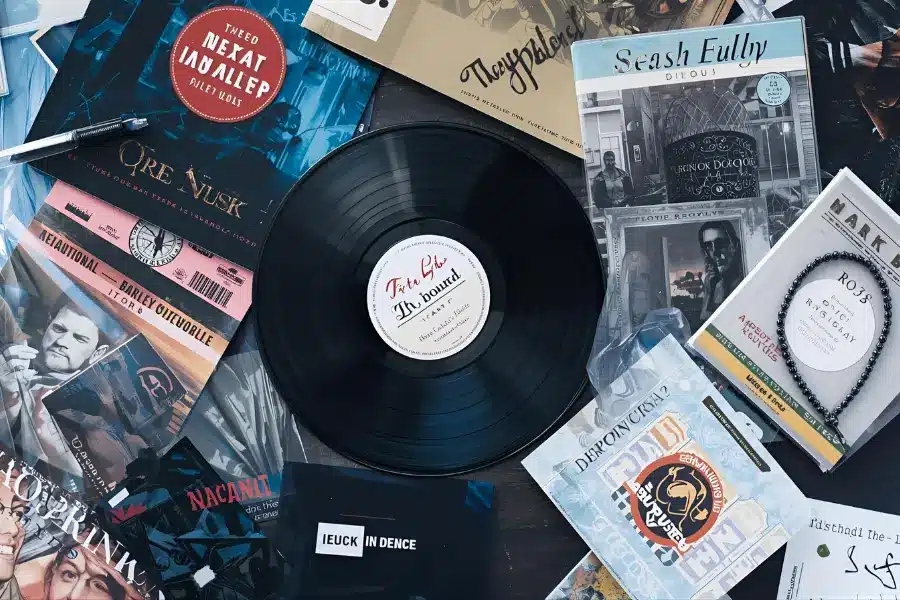
12) Worldwide music distribution vs regional: what “worldwide” really means
“Worldwide” through a distributor usually means delivery to a large network of DSPs globally, but rights, royalties, and reporting still follow territorial rules. For example, if your music streams in the US, The MLC handles digital mechanicals for compositions; in AU, APRA AMCOS handles performance/mechanical licensing locally, while PPCA covers certain sound recording uses. Build your registrations accordingly — don’t assume your distributor captures every revenue stream.
13) Common traps (and how to avoid them)
Confusing “distribution” with “publishing.” Distribution pays you for master recordings from DSPs. Publishing (songwriter money) comes via PROs and mechanical collection (e.g., The MLC in the US). You likely need both (or a publishing admin) set up.
Rushing artwork/metadata. A typo in your artist name or a wrong role tag can split catalogs or merge you with another artist — fixable, but costly in time/algorithms.
Leaving unmatched money on the table. If you skip SoundExchange (US) or PPCA (AU) where relevant, you’re likely missing income.
Relying on outdated pricing roundups. Always verify current prices/features on official pricing pages right before you purchase.
Extra gotchas to add:
- Fraud & inorganic streaming can trigger clawbacks; keep campaign proofs (invoices, ad targeting) for audits.
- AI/impersonation: platforms don’t ban “AI” categorically, but rights/impersonation matters; YouTube now expects disclosure for realistic AI-altered content. (YouTube AI disclosures)
For a plain-English explainer on contracts, copyright, and royalty pitfalls specific to rap artists, read our guide: Copyright and contracts for rap artists.
14) FAQ: quick factual answers artists ask every week
Can I upload directly to Spotify or Apple Music without a distributor?
Generally no (unless you’re a label with a direct deal). Use a distributor and then claim your creator dashboards.
Do I need both ISRC and UPC?
Yes. ISRC identifies each track; UPC identifies the overall release. They’re foundational for tracking, reporting, and charting.
If I switch distributors, do I keep my ISRC/UPC?
Keep ISRCs the same to preserve play history where possible; you normally keep your UPC for the same edition of a release. Confirm your new distributor’s re-delivery process. (Policy nuance exists, but the principle is stability of identifiers.)
Do distributors collect all my royalties?
No. They handle store/stream revenue for the recording. You still need the songwriting side set up (APRA AMCOS/PRO; The MLC in the US) and the recording performance side (SoundExchange US; PPCA AU) where applicable.
Is “Discovery Mode/Marquee” worth it?
They’re official Spotify tools that can accelerate reach if you have the budget and a growth hypothesis. Treat them like experiments; measure incremental lift, saves, and followers.
How do I grow my career once I’ve set up distribution?
Distribution gets you into stores, but your career grows through consistent branding, live shows, and fan engagement. Our ultimate music career guide covers the bigger picture.
15) A practical checklist you can copy into your Notes
Pick a model (subscription vs per-release) and verify current pricing on the official page.
Assign ISRCs (tracks) and UPC (release); log them.
Upload to your distributor with clean metadata, lyrics, credits, and correct flags.
Claim Spotify for Artists / Apple Music for Artists; schedule your release and pitch.
Register/confirm APRA AMCOS (AU) or your local PRO; connect to The MLC for US digital mechanicals.
Register SoundExchange (US) / PPCA (AU) as relevant.
Launch, then test Showcase/Marquee/Discovery Mode where eligible.
Reconcile statements monthly; audit splits and registrations quarterly.
Maintain a steady release cadence and iterate artwork/credits/lyrics quality.
Reassess distributor fit annually.
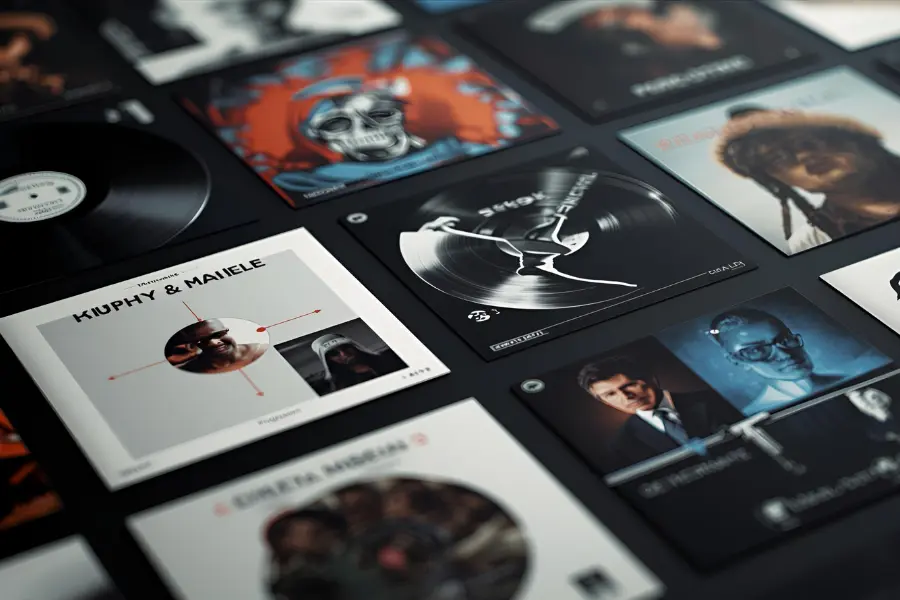
Identity & rights identifiers (beyond ISRC/UPC)
ISWC (composition ID): the unique ID for the song, issued via your PRO/publisher. Store it alongside each track’s ISRC.
IPI/CAE (writer IDs): the unique IDs for each songwriter/composer. Add all co-writers’ IPI/CAE numbers to your registry.
ISNI (creator/organization IDs): persistent identifiers for artists/labels. Helps de-dupe credits across ecosystems.
Workflow: After you register with your PRO, record ISWC + each writer’s IPI/CAE in your identifier spreadsheet (see template).
Credits supply & DDEX hygiene (so credits actually travel)
DDEX basics: distributors deliver using DDEX messages (e.g., ERN/MEAD). Clean, structured metadata = fewer rejections.
Provide roles explicitly: primary artist, featured artist(s), producer, mixer, mastering engineer, lyricist, composer, musicians.
Credit supply chain tools: consider keeping a canonical credits file (e.g., Sound Credit/Jaxsta/MusicBrainz exports) so every release reuses validated names and roles.
Regional neighboring-rights map (quick pointers)
US: SoundExchange (non-interactive digital performance).
AU: PPCA (public performance/communication of sound recordings).
UK: PPL (recording rights & performer shares).
DE: GVL (neighboring rights).
CA: Re:Sound and member orgs (MROC, Artisti, ACTRA RACS).
Register where you have material usage; neighboring-rights are separate from your distributor payouts.
UGC monetization: YouTube, Shorts, TikTok, Reels
YouTube Content ID vs store delivery: Content ID claims UGC uses; not all distributor tiers include CID or a CMS. If it matters, confirm your plan or use a specialist admin.
Short-form apps (TikTok/IG/FB): licensing terms shift. Expect catalog inclusion to vary by distributor/plan; track policy changes in a simple “watchlist.” (TikTok Sounds for Business)
Dolby Atmos, Apple Digital Masters & loudness
Atmos delivery: typically requires ADM BWF masters + partner support. Confirm your distributor/plan supports Atmos ingestion and storefront flags.
Apple Digital Masters: requires approved workflows; if you qualify, ensure the flag is requested at delivery.
Loudness: streaming normalizes playback; aim for musical intent over chasing a LUFS number. Avoid true-peak overs; leave reasonable headroom for encoding.
“Worldwide” ≠ everywhere (China/India/MENA/Africa)
Coverage across Tencent/NetEase (CN), JioSaavn (IN), Anghami (MENA), Boomplay/Mdundo (Africa) can require specific agreements. Check your distributor’s actual reach list, not just the word “worldwide.”
Fraud & inorganic streaming (protect your catalog)
Avoid clickfarms/play-for-pay panels, botted playlists, and sudden geo-spikes. Distributors/DSPs can claw back earnings and penalize catalogs. Keep campaign proof (invoices, targeting) for audits.
Tax & payout logistics (don’t get stuck at the finish line)
Complete W-8BEN/W-9, set currency and payout method, and note minimum thresholds/fees.
For collaborator splits, ensure KYC is done early so payments aren’t held.
Charting, pre-orders & reporting reality
Charts: Billboard/Luminate, OCC (UK), ARIA (AU) have specific eligibility rules (pre-orders, timing, UPC stability).
Statements: export CSVs monthly; reconcile against your ISRC/UPC sheet and PRO/MLC statements quarterly.
Switching distributors cleanly (keep ISRCs, keep streams)
Audit: export current UPC/ISRC/credits/lyrics/territories/playlists.
Re-deliver the same recordings with identical ISRCs and the same UPC for the same edition.
Stage timing: allow overlap where needed (avoid a gap where the release disappears).
Migrate links: update smart links/campaigns.
Takedown the old delivery only after the new one is live and matched.
Verify: check profiles, merges, playlist positions.
Document: keep a dated migration log.
Policy Watchlist (2025 → 2026)
Short-form platform licensing changes (TikTok/IG).
Discovery Mode/Showcase/Marquee eligibility and terms.
Atmos/ADM acceptance rules by DSP.
Distributor plan/pricing changes and add-on policies.
Drop-in artifacts (ready to use)
1) Distributor Scorecard (weights sum to 100)
Use this rubric to grade each candidate:
Pricing fit (20) — matches your release cadence & catalog size.
Rights & contract clarity (20) — non-exclusive, takedown policy, advances, brand/sync clauses.
Delivery / Apple partner features (15) — credits/lyrics/Atmos support, preferred status.
Payouts & splits (15) — collaborator auto-pay, speed, fees, tax handling.
Support & SLAs (10) — response times, escalation path.
UGC/YouTube coverage (10) — Content ID/CMS or admin options.
Regional reach (5) — China/India/MENA/Africa footprint clarity.
Data exports/API (5) — statements, analytics exports, webhook/API.
Template: Download the Scorecard CSV (from your template section).
Distribution Scorecard Tempalte Here
2) Identifier Registry (copy-paste into every release)
Columns included: Release Title, Edition, UPC/EAN, Track #, Track Title, Version, ISRC, ISWC, Writer IPI/CAE(s), ISNI(s), credits/roles, dates, territory notes, Atmos flag, lyrics/explicit flags, internal catalog ID, comments.
Template: Download the Identifier Registry CSV (from your template section).
Download Template Here
3) Switching Playbook (checklist to paste into Notion)
Pre-migration audit (metadata, assets, links).
New delivery with matching identifiers.
Overlap window planned.
Post-launch validation (ISRC match, profiles, playlists, territories).
Old delivery takedown.
Statement reconciliation across both distributors for one quarter.
Closeout doc with dates & confirmations.
17) Closing thought
Distribution isn’t just “uploading files.” It’s connecting your recordings, compositions, and business operations to a worldwide revenue engine — with the right identifiers, registrations, and cadence to actually get paid and grow.
If you want, I can tailor a compare-and-choose matrix (with weightings) for 3–5 distributors you shortlist, and draft your metadata/identifier registry template so your team never loses track of ISRC/UPC again.
